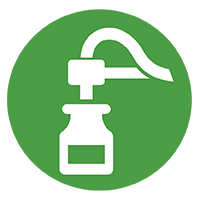Back
Turbocharging Innovation in CMC: Driving Back to Rational Drug Design
Session: Hot Topic: Turbocharging Innovation in CMC - Driving Back to Rational Drug Design
Analytical Procedures for Biotherapeutics Product Variants: Scientific and Practical Consideration
Monday, April 24, 2023
3:30 PM – 4:00 PM ET
Location: Salon B, 5th Floor

Jinhui Zhang, PhD
Chemist
US Food and Drug Administration
Silver Spring, Maryland, United States
Government Speaker(s)
A fundamental challenge for developing, validating and implementing analytical procedures for biotherapeutics is the large size and the microheterogeneity observed with respect to each quality attribute measured. Elucidating the structure, identifying and quantifying product variants of biotherapeutics often require methods designed uniquely to the analyte, multiple analytical assays that leverage cross-modal technologies and orthogonal analytics. However, for same type of product variants, the practices for analytical methods development and implementation among developers might be different, as reflected by data in literature and regulatory submission. The intention of this presentation is to put the development and implementation of analytical procedures for product variants of biotherapeutics in the context of ICH Q14 guideline: Analytical Procedure Development. The presentation will use three case studies to illustrate that applying the principles described in ICH Q14 guideline might facilitate efficient, sound scientific and risk-based method development and improve communication between regulators and developers.
Case study 1: Spike-control strategy as assay control for identification and quantitation of amino acid sequence variants.
Case study 2: Analytical variables in glycan analysis and control strategies
Case study 3: Evolving analytical methods evaluating DAR (drug-antibody ratio) in ADC (antibody-drug conjugates) drug products
Case study 1: Spike-control strategy as assay control for identification and quantitation of amino acid sequence variants.
Case study 2: Analytical variables in glycan analysis and control strategies
Case study 3: Evolving analytical methods evaluating DAR (drug-antibody ratio) in ADC (antibody-drug conjugates) drug products
Learning Objectives:
- Upon completion, participants will be able to understand the scope of recently published ICH Q14 guideline and recently revised ICH Q2R2 guideline.
- Upon completion, participants will be able to understand that a fundamental challenge for analytical procedures for biotherapeutics is the large size and microheterogeneity observed with respect to each quality attribute
- Participants will be able to understand that applying the principles described in ICH Q14 guideline might facilitate efficient, sound scientific and risk-based method development, improve communication between regulators and developers


